Gone are the days when content was merely a mosaic of keywords, designed primarily to appease search engines.
Today, the narrative has shifted towards a more holistic approach, known as Semantic SEO Writing.
This approach marries the precision of a Topical Authority Strategy, ensuring content not only dominates the search results pages but also resonates deeply with human readers.
This article aims to provide comprehensive guidance through the concept of semantic SEO writing, shedding insight into how you can refine your SEO content Strategy to include this concept.
Table of Contents
- 1 -7 Key Elements in Semantic SEO Writing and Their Impact
- 2 – The Shift from Keywords to Topics: Google’s Hummingbird Algorithm
- 3 – How Do you Write Semantic SEO Content?
- 4 – How to Optimize Each page for semantic SEO
- 5 – Structured Data: Enhancing Content Understanding in Semantic SEO Writing
- 6 – The Rise of Voice Search and its Impact on Semantic SEO Writing
-7 Key Elements in Semantic SEO Writing and Their Impact

At its core, Semantic SEO Writing is about understanding and catering to intent.
It’s about delving deeper than surface-level keywords, exploring the myriad of ways people express their queries, and crafting content that answers those queries comprehensively.
But what exactly does it entail?
1. User Intent Recognition
At the heart of Semantic SEO Writing lies the understanding of user intent. It’s not just about what users are searching for, but why they are searching for it. By focusing on intent, content creators can craft pieces that directly address users’ needs, questions, and concerns, leading to higher engagement and satisfaction.
2. Contextual Understanding
Semantic SEO goes beyond mere keyword matching. It’s about understanding the context in which a word or phrase is used. For instance, the word “apple” could refer to a fruit or the tech company. Semantic SEO Writing ensures that content is aligned with the correct context, enhancing its relevance and accuracy.
3. Topical Depth and Breadth
Rather than zeroing in on a single keyword, Semantic SEO Writing emphasizes comprehensive coverage of a topic. This involves exploring various facets, related subtopics, and interconnected themes, ensuring that content is thorough and provides holistic insights.
4. Latent Semantic Indexing (LSI) Keywords
LSI keywords are terms and phrases related to the main topic of the content. Incorporating these keywords naturally within the content helps search engines understand its context better, leading to improved rankings and broader content reach.
5. Natural Language and Conversational Tone
With the rise of voice search and conversational AI, there’s a growing emphasis on crafting content that mirrors natural human speech. Semantic SEO Writing prioritizes a conversational tone, making content more relatable and easily understood by both users and voice search algorithms.
6. Structured Data and Schema Markup
Structured data, often implemented using Schema markup, provides search engines with explicit clues about the content’s meaning. This not only enhances the content’s visibility in rich search results (like featured snippets) but also reinforces its semantic relevance.
7. Continuous Content Updates
The digital world is dynamic, and so is user intent. Semantic SEO Writing involves periodically revisiting and updating content to ensure it remains relevant, accurate, and aligned with current user needs and search trends.
– The Shift from Keywords to Topics: Google’s Hummingbird Algorithm
Remember the days when SEO was all about stuffing your content with as many keywords as possible? It might sound archaic now, but there was a time when this was the norm.
However, the entire Internet Marketing Space underwent a seismic shift in 2013, and we have Google’s Hummingbird Algorithm to thank for that.
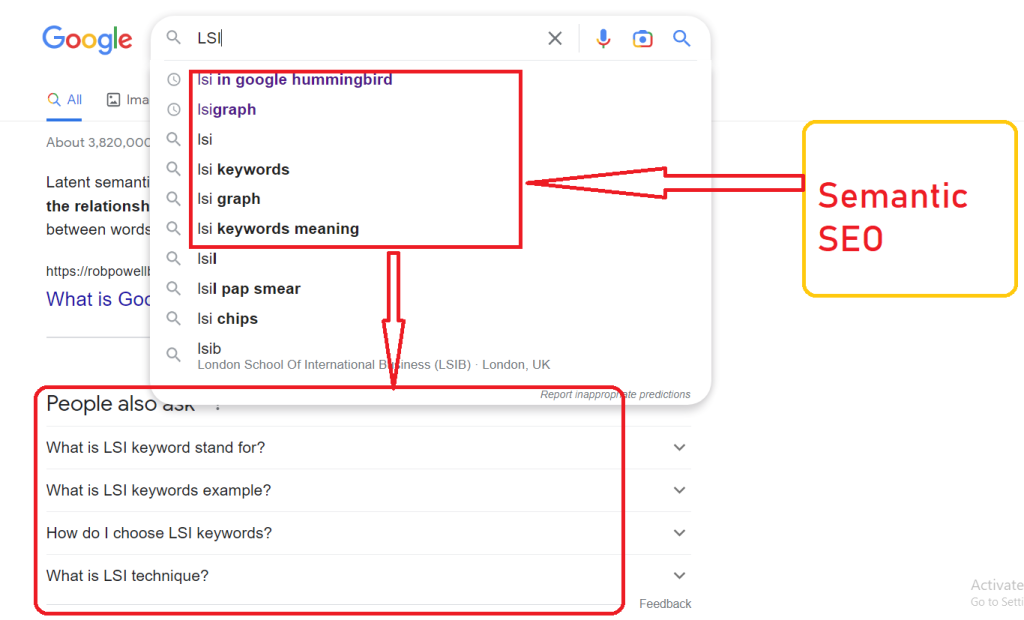
Cast your mind back to the early 2010s when SEO strategies were predominantly centered around keyword density.
The idea was simple: the more frequently a keyword appeared in your content, the higher your page would rank for that keyword.
It led to a deluge of content that, while rich in keywords, often lacked depth, value, and readability.
Then came 2013, when Google introduced the Hummingbird Algorithm, and the rules of the game changed overnight.
Instead of merely tallying up keywords, Google started to look at content the way we humans do: by understanding the broader topic and its semantic relevance.
This was not just a minor tweak; it was a complete overhaul of how Google interpreted and ranked content.
The Implications for Content Creators
For content creators, this was both a challenge and an opportunity. The challenge was to break free from the shackles of keyword-centric writing and embrace a more holistic approach.
This paved way for semantic SEO writing; It meant delving deeper into topics, ensuring comprehensive coverage, and prioritizing value over keyword count.
But it was also a golden opportunity to build Topical Authority, giving websites a chance to establish themselves as experts in the fields.
For those willing to adapt and shift to adopt Semantic SEO, Hummingbird opened the doors to creating richer, more meaningful content.
Since then, there have been several other updates, each improving on this concept for improved search quality.
This has ultimately elevated the quality of served queries to users across multiple search engines.
– How Do you Write Semantic SEO Content?
If you’re looking to implement a rewarding SEO Content Strategy, embracing semantic SEO principles is a crucial step.
It’s about diving deep, exploring every nook and cranny of a subject, and presenting it in a manner that’s both comprehensive and coherent.
The Role of Topically Relevant Content
Topically relevant content isn’t about skimming the surface.
This approach involves shifting your focus away from solely targeting specific keywords and instead emphasizes creating content that revolves around contextually related topics.
Such content doesn’t just touch upon the main points; it delves into subtopics, related themes, and even tangential ideas that add depth and richness to the primary topic.
As we earlier saw, search engines, with their ever-evolving algorithms, have a penchant for this kind of content.
They recognize its value, not just in terms of keyword relevance but in the broader context of user intent and satisfaction.
After all, a user who finds a single piece of content that answers all their queries is more likely to be satisfied than one who has to hop from one page to another.
– Topic Clustering: A Modern Approach to Semantic SEO
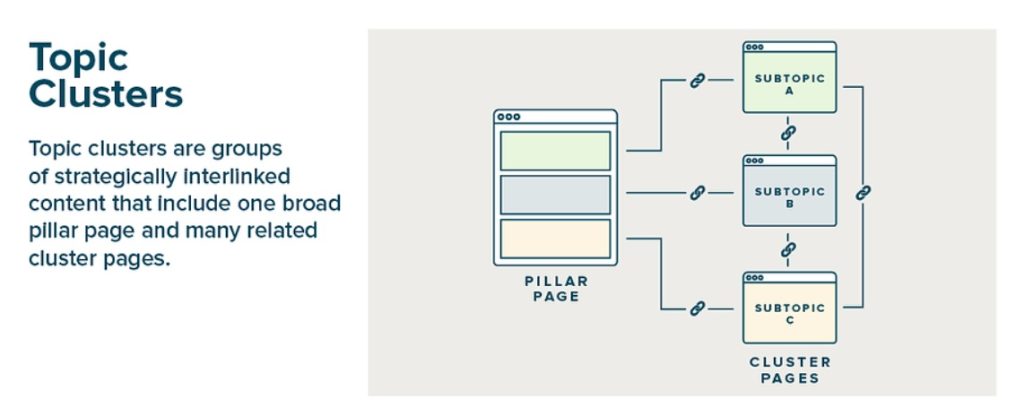
Topic clustering content strategy is a modern content strategy that aligns perfectly with the principles of Semantic SEO Writing.
At its core, topic clustering involves creating a central ‘pillar’ piece of content that provides a broad overview of a particular topic.
Surrounding this pillar article are multiple ‘cluster’ pieces that delve into specific aspects of the main topic in detail.
Imagine a solar system. The sun, in this analogy, represents the pillar content, while the planets orbiting it represent the cluster content.
Each planet, or cluster piece, shines light on a specific facet of the main topic, adding depth and dimension to the overall content strategy.
– Why Topic Clustering Matters in Semantic SEO Writing
Topic clustering is more than just a content organization strategy; it’s a reflection of how search engines, especially Google, understand and rank content.
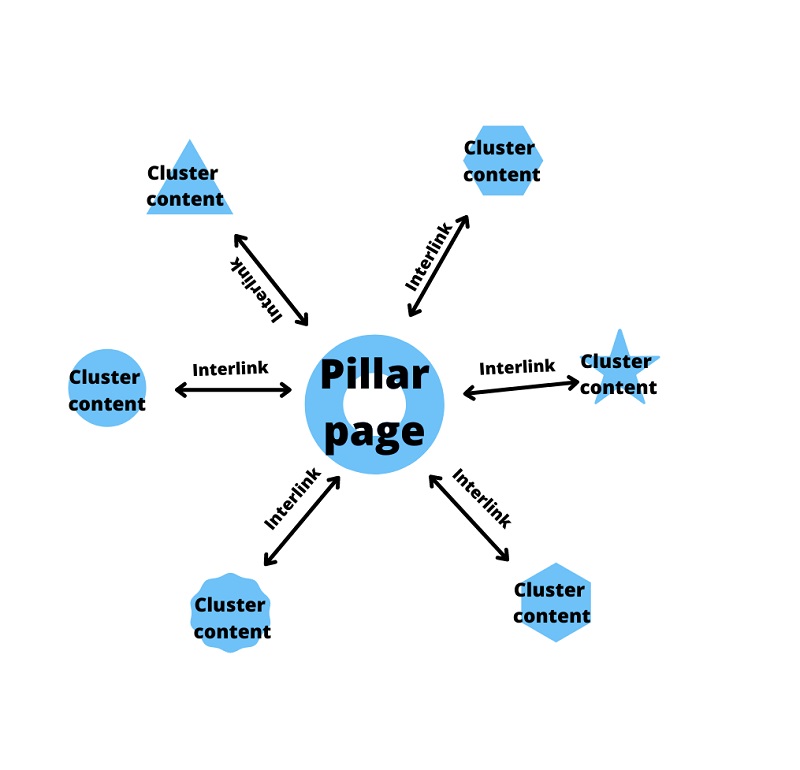
By grouping related content together, websites signal to search engines the breadth and depth of their expertise on a particular topic.
This not only enhances the site’s authority on the subject but also improves the chances of ranking higher for a broader range of keywords related to the main topic.
Moreover, mastering topic clusters will help you ideate content that aligns with the user’s journey.
A user might start with a general query, land on the pillar content, and then navigate to cluster pieces to delve deeper into specific areas of interest. This seamless journey not only enhances user experience but also increases the chances of user engagement and conversion.
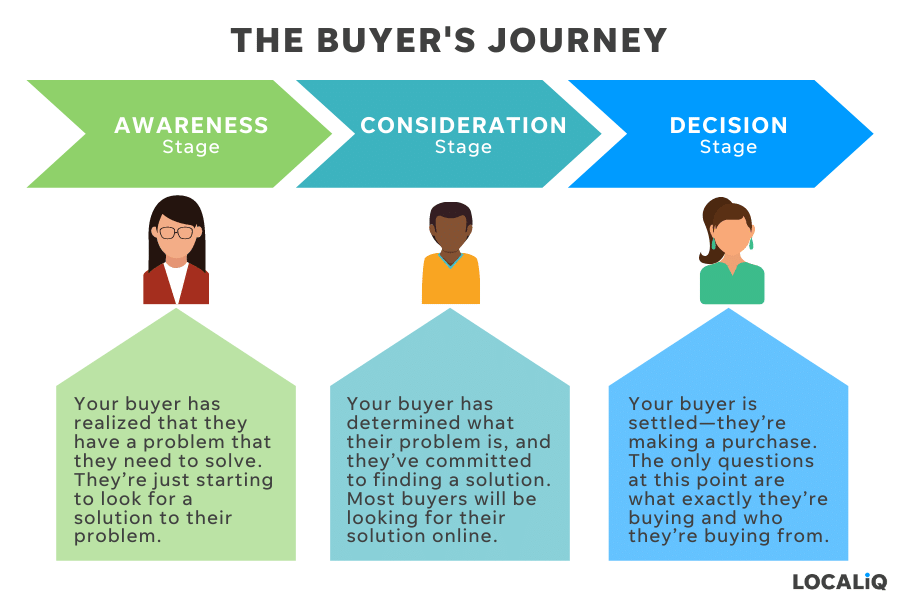
– How to Optimize Each page for semantic SEO
You have obviously asked yourself, How do I optimize my page for semantic SEO?
Picture this: You’re crafting a masterful article about sustainable living and have covered everything from renewable energy to zero-waste lifestyles.
But how do you signal to search engines that your content is a comprehensive resource on sustainability, and not just a series of isolated topics?
This is where LSI Keywords come in, a secret weapon in the arsenal of Semantic SEO Writing.
What Are LSI Keywords?
Latent Semantic Indexing (LSI) keywords are terms and phrases that are contextually related to your main topic. They aren’t necessarily synonyms of your primary keyword, but they are closely aligned with the theme of your content.
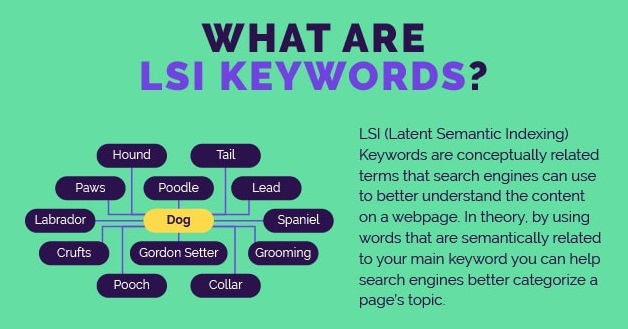
For example, in an article about “sustainable living,” LSI keywords might include “renewable energy,” “composting,” “recycling,” and “eco-friendly products.”
From a search engine’s point of view, LSI keywords are like guideposts. They help algorithms understand the context and depth of your content.
When Google crawls your article on sustainable living and finds terms like “solar panels,” “organic farming,” and “waste reduction,” it gets a clearer picture that your content is indeed a thorough resource on sustainability.
Expanding Your Content’s Reach
But the magic of LSI keywords extends beyond just pleasing search engine algorithms. They play a pivotal role in expanding your content’s reach.
By incorporating LSI keywords, your content becomes eligible to appear in a broader range of search queries.
Continuing with our example, your sustainable living article could now show up in searches for “how to reduce waste at home” or “benefits of renewable energy” – searches you might not have initially considered, but are highly relevant to your content.
How to Find and Use LSI Keywords
So, where do you find these golden nuggets?
Tools like Google’s “Searches related to” section at the bottom of search results, or keyword research tools like SEMrush and Ahrefs, can be treasure troves for discovering LSI keywords.
You can also utilize ChatGPT, prompting it to list associated LSI Keywords for any given keyword.
Once you have a list, the key is to integrate them naturally into your content. They should enhance, not disrupt, the flow of your writing.
A Word of Caution though!
While LSI keywords are powerful, they aren’t a ticket to keyword-stuff your content.
The goal is not to cram as many related terms as possible, but to use them in a way that enriches your content and makes it more informative and engaging for the reader.
– Structured Data: Enhancing Content Understanding in Semantic SEO Writing
Advancing into Semantic SEO, preparing top-notch content is just part of the equation.
To truly make your content stand out and be comprehensible to search engines, structured data becomes an invaluable ally.
Often referred to as Schema Markup, this powerful tool serves as a translator between your content and search engines, bridging the gap and enhancing understanding.
Let’s delve into how structured data plays a pivotal role in Semantic SEO Writing.

What is Structured Data?
In simple terms, structured data is a standardized format for providing information about a page and classifying its content.
For example, if your page is a recipe, structured data can communicate key details to search engines, such as the ingredients, preparation time, and cooking temperature.
In the context of Semantic SEO Writing, structured data helps to clarify the meaning and context of your content, allowing search engines to understand not just what your words say, but what they mean.
Not a Ranking Factor, But a Visibility Booster
While structured data itself isn’t a direct ranking factor in SEO, its impact on your content’s visibility can be substantial. By implementing structured data, your content becomes eligible for rich snippets in search results.
These are enhanced descriptions that appear below the title, offering users a preview of what the page contains.
Rich snippets can significantly improve click-through rates, as they make your page stand out in the search results, thereby indirectly boosting your SEO performance.
As we mentioned earlier, semantic SEO Writing is all about creating content that resonates with both human readers and search engines.
It’s about crafting content that is not just keyword-optimized but context-optimized.
Therefore, by adding schema markup to your semantically written content, you are essentially providing a roadmap for search engines, guiding them through your content and helping them understand the nuances and context of your words.
Ultimately, this is what makes your content not just readable, but understandable by search engines.
– Implementing Structured Data for Semantic SEO
Adding structured data to your content might sound technical, but with various tools and plugins available, it has become increasingly accessible.
Whether you are manually adding JSON-LD (JavaScript Object Notation for Linked Data) script to your HTML, or using a plugin like Google’s Structured Data Markup Helper, integrating structured data is a step that complements your Semantic SEO Writing efforts.
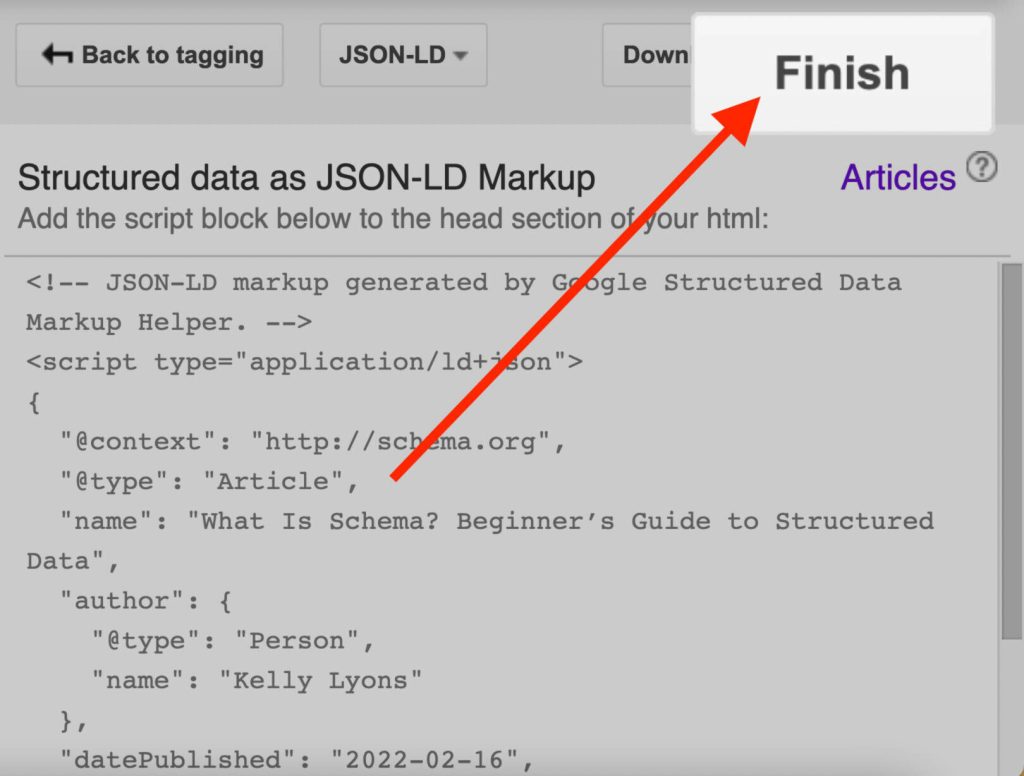
Implementing schema is even easier on platforms like Word-Press. When it comes to adding Schema markup to your content, there are several top-rated plugins that make the process almost effortless.
Plugins like Yoast SEO, Rank Math, and AIOSEO Rich Snippets are designed to be user-friendly, requiring no coding knowledge.
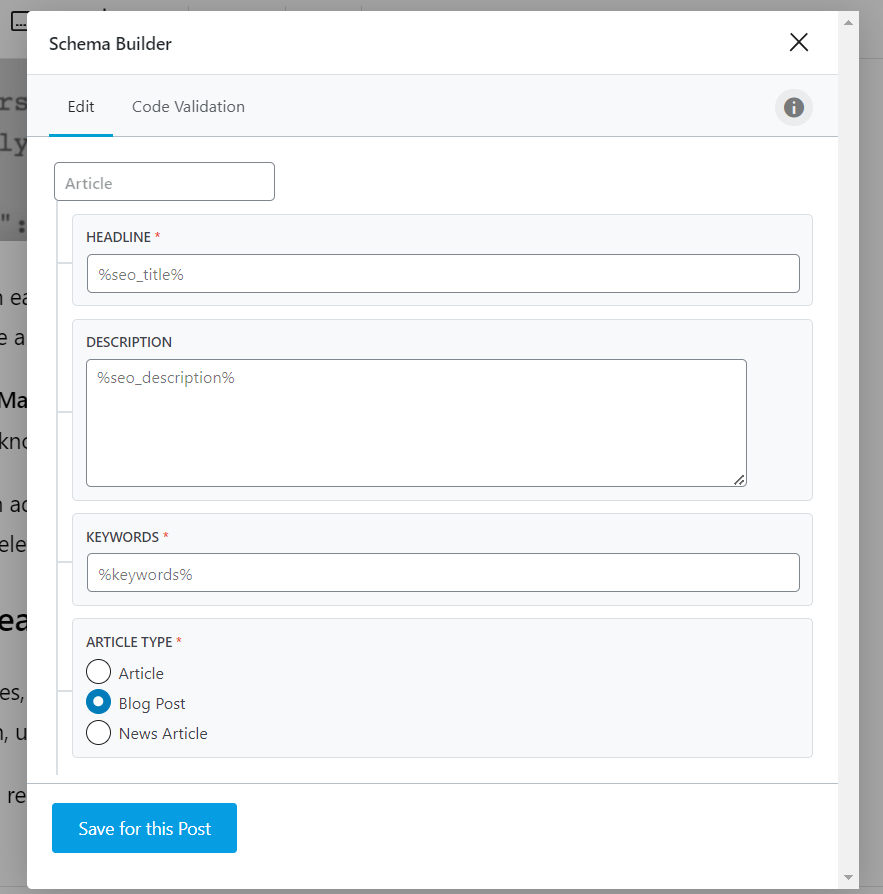
With just a few clicks, you can add the necessary structured data to your posts, helping search engines understand the context and relevance of your content in line with your Semantic SEO Writing efforts.
– The Rise of Voice Search and its Impact on Semantic SEO Writing
Unlike traditional typed queries, voice search is inherently conversational. People speak to their devices as they would to another person, using full sentences and natural language.
Instead of typing “best Italian restaurants nearby,” a user might ask, “Where can I find the best Italian food near me?”

This shift towards conversational queries demands a new approach to content creation.
Semantic SEO Writing: A Perfect Fit for Voice Search
The beauty of Semantic SEO Writing lies in its emphasis on context, intent, and comprehensive topic coverage. Instead of focusing solely on specific keywords, Semantic SEO Writing delves into the broader theme, capturing the essence of a topic.
This approach aligns seamlessly with the nature of voice search queries.
For instance, a well-crafted piece on Italian cuisine, written with Semantic SEO principles, would not only cover popular dishes but also delve into regional variations, cooking techniques, and the history of Italian food.
Such comprehensive content is more likely to answer a broad range of voice search queries, from the history of pasta to the best wine pairings with spaghetti.
Optimizing for Voice Search: Tips for Semantic SEO Writers
Focus on Long-Tail Keywords: Given the conversational nature of voice search, long-tail keywords, which are longer and more specific keyword phrases, become crucial. These keywords often capture user intent more accurately.
Craft Content in a Q&A Format: Many voice searches are posed as questions. Creating content that directly answers these questions can improve its visibility in voice search results.
Prioritize Local SEO: A significant portion of voice searches are local in nature, like finding nearby restaurants or shops. Ensure your content is optimized for local search by including location-specific keywords and details.
Ensure Mobile-Friendliness: Most voice searches occur on mobile devices. Ensure your content is mobile-friendly, with fast loading times and a responsive design.
CONCLUSION
Semantic SEO Writing is more than just a trend; it’s a fundamental shift in how we approach content creation in the age of advanced search algorithms and changing user behaviors.
From understanding the profound impact of Google’s Hummingbird Algorithm to harnessing the power of LSI keywords, structured data, and topically relevant content, Semantic SEO Writing is about crafting content that resonates on a deeper level—with both search engines and human readers alike.



